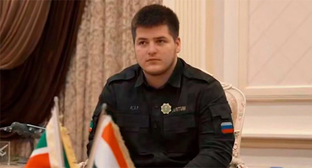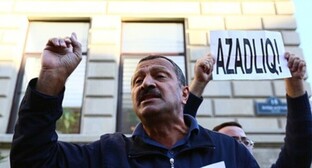29 April 2003, 13:31
Mozdok
Rayon (sector) centre of North Ossetia, 92 km north of Vladikavkaz. Located at the southern end of the Terek-Kuma Lowland, on the high left bank of the Terek River. Railway station in the Prokhladnaya - Gudermes line. Motor road junction. Population (1992 est.) 39.3 thousand, (1979 est.) 34 thousand.
The settlement in the tract of Mazdogu (the Cabardinian for dense, primeval forest) was founded in 1759. In 1763, Kurgoko-Kanchokin, the owner of Small Kabarda, who had taken out the citizenship of Russia, founded a Russian embattled advanced post located in the centre of the Caucasian boundary lines, built a church, established a custom house and opened a school (in 1766). In 1785, Mozdok received the status of an uyezd (canton) city of the Caucasian vicegerency. In the late 18th and early 19th centuries, Mozdok was a large trade centre of the North Caucasus. Mozdok autumn fairs were very popular all over the Caucasus. In 1823, the Dubinin brothers, who were Russian peasants, built one of the first refineries in Russia here and began production of kerosene. During the Caucasian war, the city was attacked by groups of mountaineers under the leadership of Imam (political-religious leader) Shamil in 1840. In the 1870s, the railway connecting Rostov-on-Don to the western coast of the Caspian Sea was driven. Mozdok, standing aside of this important thoroughfare, lost its economic importance and the status of a city.
In the late 19th and early 20th centuries, Mozdok was a sloboda (settlement), a trade centre for neighbouring stanitsas (Cossack villages) and Ossetian settlements. During the Civil war, Mozdok was repeatedly an arena of operations. In 1923 and in 1926, in the period of economic rise caused by the NEP (New Economic Policy), Mozdok was re-approved as a city. During the Great Patriotic War of 1941-1945, there were fierce fights in the area of Mozdok (in 1942-1943); the city was occupied by Nazi troops from August 25, 1942 to January 3, 1943.
Present Mozdok is the second in population among North Ossetian cities, a large agricultural centre (cultivation of grain and technical crops, including sunflower; wine-growing, cattle breeding) and an industrial centre. By the beginning of the 1990s, the city had flavouring industry (a meat-processing plant, a dairy factory, a brewery, a winery), a curtain factory, a brickworks, etc.
The city has a museum of local lore. The central street of Mozdok built up with multi-storeyed houses, goes down to the Terek River. Streets with one-storeyed houses surrounded with front yards and gardens stretch in parallel and at the right angle to it. The city has two large parks, as well as a bridge across the Terek with a highway leading to Vladikavkaz.





Комментирование через Кавказский узел